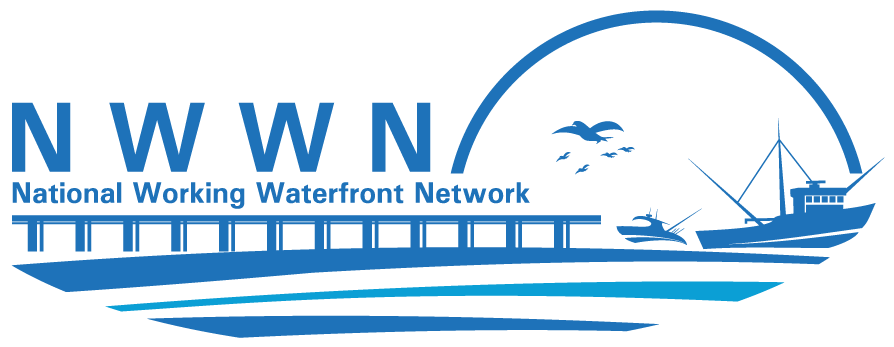Waterfront Industries
Working waterfronts and the industries they support have a fundamental cultural, societal, and economic impact on their local communities. The well-known industries profiled below add to the cultural influence and personal interaction that make the working waterfront community such an appealing place to work and to visit.
Marine Living Resources
Working waterfronts are vital to the preservation and prosperity of coastal communities and to the support of the marine living resources industry. The value of these marine living resources, including fishing and aquaculture, extends far beyond providing food for an increasing global population with a growing per capita seafood consumption rate.
Commercial fishermen depend on access to working waterfronts not only to earn income to support their families, but also to maintain their fishing tradition and community culture. In the small-scale fishing industry, fishing is much more than an occupation; it is a way of life and the foundation of the community. In conjunction with the harvesting and growing of living marine resources, working waterfronts also support necessary shoreside facilities, such as seafood processing plants.
Coastal Tourism and Recreation
The coastal tourism and recreation industry comprises water-based operators, including marinas, boat dealers, cruise ships, recreational boaters, and tour operators. Tour operators conduct on-water excursions such as sightseeing tours, whale watches, charter fishing, marine park visits, kayaking, and scuba diving. These businesses require consistent access to the waterfront and many of these operators conduct several trips per day. Some businesses, such as waterfront hotels and restaurants, are considered waterfront-enhanced, i.e. they benefit from an attractive waterfront location but are not dependent on waterfront access as a requirement for operation. In addition to generating revenue through each business, these tourism operations serve as a general attraction for people to visit the waterfront, patronize various local businesses, and learn about these waterfront industries.
Marine Transportation, Marine Construction, Ship and Boat Building
Marine transportation includes deepwater carriers engaged in international trade such as container ships, tankers, dry bulk carriers, multi-purpose cargo, and car carriers. There are also domestic vessels moving along the coast (coastwise trade) between U.S. ports using smaller ships and barges, tugs and towboats. Working waterfronts must have an advantageous location and the required capabilities, size, and depth of entrance channels and berths to support this industry. Waterfront facilities include the port itself, cargo shipping facilities, and storage warehouses.
Waterfronts also feature passenger ferries, which provide important transportation for workplace commuting and recreational excursions, as well as necessary mainland access for island residents. Ship and boat building are important waterfront industries across the country. In particular, boat building of smaller vessels intended primarily for recreational or personal use is prominent in the Pacific Northwest and Maine. Another important waterfront service is marine construction, which requires berthing and lay-down space, with the use of barges, dredges, and cranes.
Energy
The working waterfronts in the Gulf of Mexico and Southern California have long supported the oil and gas industry that has been crucial to our nation’s industrial development. The United States coastal and offshore renewable energy industry, however, is in its infancy. Initial wind energy projects and marine hydrokinetic energy projects are in progress and vary by geography. Based on favorable regional conditions, the Pacific Northwest is moving forward with wave energy development. In contrast, the Northeast and Mid-Atlantic have focused primarily on wind energy projects. The economic viability and success of this emerging energy sector will depend on a supportive political, regulatory, and social climate, in addition to the necessary waterfront facilities. Required port characteristics, such as minimum depth, berth, horizontal and vertical channel clearance to a harbor, and minimal distance to the project site also are important. The growth of renewable energy has the potential to strengthen and expand working waterfronts as the nation seeks greater energy security.

